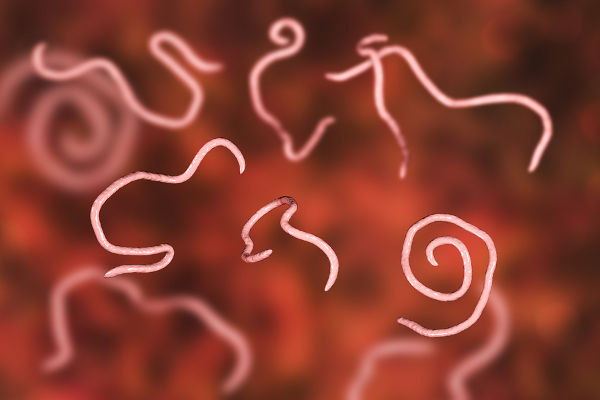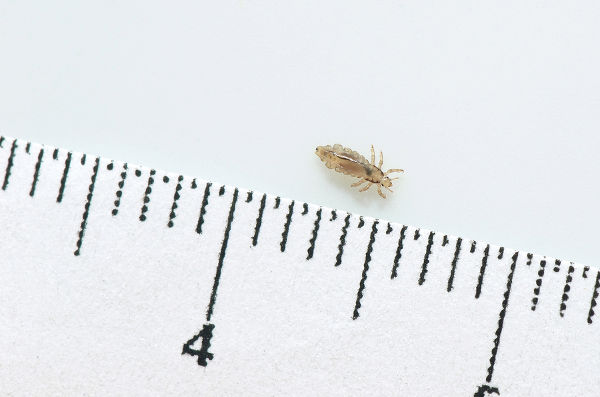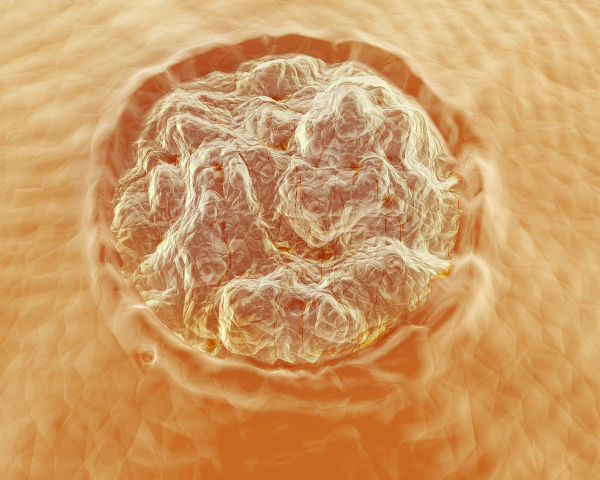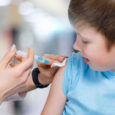Social media and whimsical photo shoots often present a view of parenting that depicts immaculately presented children with bright, clean clothes, perfectly braided hair, and big, wide, heart-warming smiles. In reality, the smiles might still be there, but the clothes will be covered in snot and dirt, and the hairgrips would have been lost ten minutes after they were put in place. As any parent who has ever had to utter words “Don’t lick the window” knows, kids are universally and inherently gross. Digging around in dirt, picking up discarded food from the floor, picking their nose, and scratching their bottoms are just a few of the grim habits they seem to be born with.
Health experts tell us not to worry and that exposure to all that muck is good for their immune systems. Whilst we might resign ourselves to this truth and take a small grain of comfort in it when once again we are removing a handful of mud from their pockets, there are some occasions when they present with ailments and conditions that completely gross us out. Annoyingly, these are also the conditions that tend to be hardest to get rid of.
Threadworms, AKA Pinworms

Just the name “threadworms” is enough to churn the stomach. If you are not familiar with this particularly gruesome condition, then it’s pretty simple to explain. Threadworms, also known as Pinworms, are teeny, tiny, little white worms that live in your poo. Yep, poop worms. Lovely.
How Serious Is It?
Although the idea of worms in your poop might sound horrifying, thankfully, it’s not that serious. In fact, it’s estimated that up to half of all under ten year olds in the UK are affected at some point in their lives. For most people, they will only cause mild discomfort. In very rare cases, prolonged infection can lead to poor nutrient absorption and weight loss. For females, there is a very small chance that the infection can lead to a UTI and complications to the vagina area.
There is no need to keep your child off school if they have threadworms providing you have given them the medication and are adhering to a strict hygiene regimen as outlined below. However, some childcare providers may have a different policy.
What Are the Symptoms?
The main sign that your child is infected will be itchiness around their bottom. This is particularly bad at night and young, non-verbal children may become upset and restless at night for no obvious reason.
The worms themselves can be hard to spot. As the name implies, they resemble small pieces of white cotton thread, about half to one centimetre long. They can be seen in your child’s poo, or around their anus. The best time to try and spot the worms is at night, a couple of hours after your child has fallen asleep, when the female worms leave the inside of the anus to lay eggs around the bottom. There’s no pleasant way of doing this. You will need to shine a torch at your child’s bottom as they sleep. Bet that wasn’t something you envisaged when you planned your life as a parent.
How Do I Get Rid of Them?
You can buy medicine called Mebendazole (the usual brand name in the UK is Ovex) from the pharmacist that will kill all of the live worms in your child. Everyone in the household will need to take the medicine in order to prevent re-spreading the infection. However, the medicine should not be taken by those who are pregnant or breast-feeding, by children under the age of two, or by people taking certain medications.
Unfortunately, the medication does not get rid of all the eggs, and these can survive outside of the body for up to two weeks. Pinworms lay thousands of eggs each night, and these can easily be transferred from your child to their clothes, bedding, toys, and various surfaces. Therefore, in addition to taking the medication, you will need to follow a strict hygiene regimen for at least two weeks. For children under the age of two and other people who cannot take the medication, your GP may advise that you follow the strict hygiene regimen for six weeks as an alternative to medication.
You will need to:
- Immediately wash all bed linen, pyjamas, towels, and any cuddly toys that are taken into bed. This includes your own towels and linen. Re-wash flannels after every use and re-wash the other items every couple of days.
- Vacuum the entire household immediately and then continue to vacuum once every couple of days.
- Clean all surfaces immediately with a hot, damp cloth, particularly in the kitchen and bathroom. Clean the kitchen surfaces after every use and clean the bathroom every couple of days.
- Don’t shake any blankets or towels, etc. The eggs are so small and light they can easily be spread around the room if you do so, and even be inhaled.
- Clean any toys with a damp cloth.
- Make sure everyone washes their hands and scrubs their nails properly with hot soapy water after they use the toilet and before they eat.
- Eggs can get stuck under nails and can then be transferred into mouths. Keep everyone’s fingernails short.
- Everyone should wear close-fitting underwear during the night. This helps to prevent any eggs being transferred to the bed. The underwear should be changed each morning and night.
- Everyone needs to have a good wash around their bottoms each morning to get rid of any eggs that have been laid overnight.
Head Lice, AKA Nits

If the idea of worms in your poop didn’t seem too bad, then how about dozens of creepy crawly insects in your hair? Head lice, also known as nits (which is actually the name for the head lice eggs), are a common problem in school aged children.
How Serious Is It?
Head lice are mostly harmless and an almost inevitable part of childhood. It’s thought that up to 10% of children have the little bugs at any one time. The lice can’t jump or fly, but they can walk pretty quickly for something so small. Young children who have less need for personal space boundaries tend to get very close to one another when playing, even touching heads, which allows the lice to spread easily.
Occasionally, the lice can cause skin irritation on the scalp. However, for your child, the main concern would probably be regarding the anxiety that comes from the stigma associated with head lice. Children with head lice may experience bullying. That’s despite there being no evidence to suggest that the lice prefer either clean or dirty hair. They are not fussy and will set up home wherever they can.
What Are the Symptoms?
An itchy scalp is usually the first symptom. Sometimes children might report the sensation of something moving in their hair. You will need to check carefully for signs of nits and lice, and it’s a good idea to do this regularly anyway, as often children don’t have any symptoms at all. The insects are very small – about a quarter of a centimetre long, or the size of a sesame seed. They range in colour from grey to brown and have no wings and six legs. The eggs are even smaller, appearing very similar in size to flakes of dandruff, and come in a variety of colours that can match your child’s hair, making them difficult to spot. Most lice and nits are generally found close the scalp around the ears and neck.
How Do I Get Rid of Them?
There are three main methods used for getting rid of lice. Each has their own pros and cons.
- Insecticides are one popular choice. There are a variety available to buy in the UK from the chemist that can be used to wash the hair. These work by poisoning the eggs via the use of chemicals. They are very effective at killing the live lice, but don’t always kill the eggs, so repeated treatment may be needed. In addition, lice can become resistant to the chemicals, so prolonged use is not advisable.
- Other products kill the lice by either suffocating or drowning them. These are thick lotions applied to the hair and left on for a few minutes. These are popular with parents who dislike the idea of using insecticides. However, they are even less efficient at killing the eggs, and repeated use is required. In addition, some of the products are highly flammable and there have been cases where treated hair has later caught fire after being in close proximity to a naked flame.
- Finally, many parents prefer to use the combing method. This is very effective and doesn’t require any chemical treatments. However, it is also very time consuming. Hair should be washed thoroughly and then plenty of conditioner should be applied but not rinsed out. Brush the hair initially as normal to detangle it, then use a special detection comb such as the Nitty Gritty to comb small sections of hair from the scalp to the end. After each stroke with the comb you will need to check for evidence of nits and lice and rinse it off. This can take up to 30 minutes (and it’s a good idea to have a book, cartoon, or iPad available to help keep your child still. This needs to be repeated every three to four days for the next two weeks to remove any young lice as the eggs hatch.
Warts & Verrucas

Our final grim and gruesome childhood complaint brings us to warts and verrucas. These are small growths on the skin that are caused by the HPV virus stimulating rapid growth of the affected area, creating the small lumps. There is a lot of stigma associated with warts, as many people link them with genital warts that are sexually transmitted. However, genital warts are caused by a different strain of the HPV virus (there are over 180 strains in total).
Warts on other areas of the skin and verrucas (which is the name given to warts that grow on feet) are very common in children because they haven’t built up immunity to the strains of HPV virus that cause them. This article does not cover genital warts, which should always be checked by a doctor.
How Serious Is It?
Like most childhood ailments, warts and verrucas are not serious. There is a very small chance that the wart can become infected. There is also a very small chance that the warts can become malignant in those who have weakened immune systems as a result of other conditions.
However, warts can appear on the face. In addition, thanks to the stigma associated with the condition, children with warts may suffer from bullying at school, leading to general anxiety and low self-esteem.
What Are the Symptoms?
Common warts, i.e. those that appear on the hands, face, etc., can range in size between 1mm and 10mm in diameter. They are usually round or oval in shape, raised, and have a rough surface. They can be itchy and sometimes appear in clusters.
Verrucas (also known as Plantar Warts) appear on the soles of feet. They are usually white with a small black dot in the centre which is the blood vessel. They tend to be flat because the weight of your body on your feet forces them to grow into your skin rather than out. As a result, they can be quite painful.
How Do I Get Rid of Them?
Warts and verrucas can be difficult to get rid of. Most will eventually go away by themselves, but this can take a long time, even years. In the meantime, your child will still be able to spread the warts to other people, including those with compromised immune systems, so it’s best to try and treat them if you can. You will also need to take preventative measures to avoid spreading them. These include:
- Wearing special swimming socks for swimming and normal socks for indoor PE sessions, etc.
- Maintaining good hand-washing habits
- Not allowing other children to touch the warts
- Avoid biting nails and scratching warts
- Not sharing towels and flannels
There are a number of methods that can be used to remove verrucas and warts. Some are more effective than others, and you may find that your child has a particularly stubborn one that will not be removed no matter what you try. These include:
- Home freezing kits that “freeze” the wart or verruca off. These can be a very effective and quick way of removal. However, they are not suitable for children under 4 years old and can be painful.
- Gel treatments that contain Salicylic Acid. The acid can be very effective at removing warts and verrucas, but it does take time. You will need to apply the gel daily and file down with an emery board each day before reapplying. It may take a couple of weeks to take effect.
- Taping the wart or verruca. Some parents swear by the simple method that involves applying duct or gaffer tape to the blemish and leaving it on for a week. It’s thought that the tape contains the virus enough to allow your immune system to do the hard work. If the tape falls off a new piece should be applied immediately.
- Applying vinegar to the wart or verruca. This method requires you to soak some cotton wool in vinegar and then holding it in place against the blemish with tape and leaving overnight. This needs to be repeated for several days. It’s thought that acid in the vinegar destroys the virus and the infected skin.




